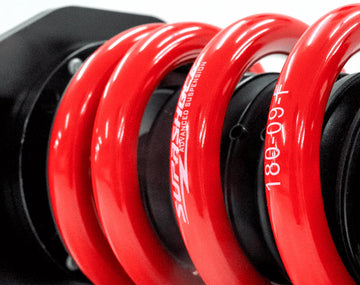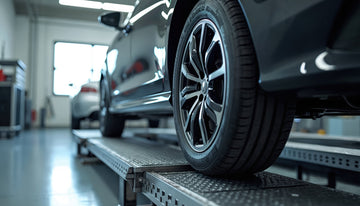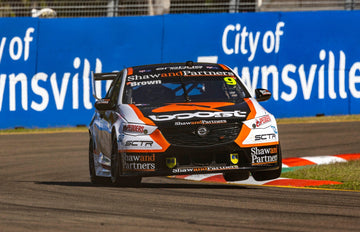If you’re in the market for a high quality lift kit, Supashock offers kits that range from $2,999 to $3,959. This ensures that our products retain their affordability without compromising on quality.
We offer lift kits for the following makes and models:
- Toyota Prado
- Toyota Landcruiser 200 Series
- Mazda BT-50
- Toyota Hilux
- Isuzu D-Max
- Ford Ranger PXI, PXII, PXIII Models
- Holden Colorado RG Model
- Toyota Landcruiser 79 Series
How much does it cost to install a lift kit in Australia?
In addition to the cost of the lift kit itself, another cost comes from the installation process. The cost of installing a lift kit on a vehicle in Australia can vary quite a bit depending on several factors:
- Type of vehicle (Ute, SUV, etc.)
- Labour costs at the installation shop
- Location
However, as a rough estimate, you can expect to pay somewhere between AU$750 to AU$1,000 to have a basic lift kit professionally installed on most 4x4s in Australia, based on 5-7 hours of labour. We recommend getting quotes from a few different mechanics in your area for your specific vehicle make/model to get a more accurate estimate for you.
What influences the cost of lift kits?
There are several reasons why lift kits have their cost, especially for larger suspension lift heights:
Quality of components
The biggest influence on the cost of a lift kit are the parts and the components that make up each assembly. Reputable brand names use higher quality materials, increasing costs.
Complexity of the kit
Standard 2” lift kits are relatively simple with just a few new parts. But kits lifting 4 inches or more require replacing many more suspension pieces like differential drops, brake line extensions, driveshafts, and more. The complexity drives up part counts and costs.
Vehicle-specific design
Lift kits have to be designed and validated for specific make/model vehicles. This research and development by the manufacturers is built into the pricing.
Off-road performance expectations
Buyers expect a lift kit to enhance the off-road performance of their vehicle. This requires extensive tuning and testing by the manufacturer.
Labour for installation
While you can install them yourself, professional installation is recommended. Australian workshops generally charge around $150 AUD per hour, and a typical install ranges from 5-7 hours.
Liability and warranties
Comprehensive warranties and liability coverages are baked into the costs by the manufacturers.
What are the benefits of a lift kit?
If you are looking for a life kit for your vehicle, chances are that you are aware of the many benefits of a lift kit. However, if you need a reminder, these benefits include the following:
- The main advantage is gaining extra inches of clearance from the ground. This allows for better ability to clear obstacles and navigate over rough terrain when off-roading.
- Lifting the vehicle creates more space to fit larger diameter tires with more aggressive off-road tread patterns. This improves traction on loose surfaces.
- The increased height results in better approach and departure angles, making it easier to drive over erosions, logs or rocky surfaces without bottoming out.
- The combination of higher ground clearance and larger tires leads to much better overall off-road performance and the ability to tackle more challenging trails.
- Being raised up higher provides improved visibility over the bonnet and around the vehicle.
- Vehicles with quality lift kits can demand higher resale prices from buyers looking for turn-key off-road rigs.
Is it worth installing a lift kit yourself?
Whether it's worth attempting a lift kit install yourself depends on:
- Your mechanical abilities
- Your comfort level working on vehicles
- How much you value your time versus the potential cost savings.
If you have good mechanical skills, the right tools, a safe workspace like a garage, and the vehicle lift/suspension knowledge - installing a “2 lift kit yourself may be a feasible way to save money.
Many enthusiasts attempt lift kit installations themselves as a fun project, but have backup plans to take it to a shop if issues arise. Proper research and preparation is key if you decide on a DIY lift kit install.
Is it hard to install a lift kit?
Installing a lift kit can be quite challenging, especially for those without prior experience working on vehicle suspensions. Here are some of the key factors that make lift kit installations difficult:
- Complexity: A full lift kit may involve replacing multiple major suspension components like springs, shocks, control arms, etc. This requires disassembly of many parts.
- Heavy Lifting: Many suspension parts are relatively heavy, like struts and leaf springs. Safely lifting and manoeuvring these is very difficult without proper equipment.
- Alignment: Once installed, the suspension needs to be professionally aligned. This is critical for safety and drivability.
- Cutting/Welding: Some lift kits require cutting and welding of the frame or body mounts, which requires specialised skills (Supashock lift kits do not require this type of modification).
- Special Tools: Unique tools like spring compressors, ball joint separators, and specific wrenches are often needed.
- Vehicle Knowledge: Having an intimate understanding of the particular vehicle's suspension geometry is extremely helpful.
What are the disadvantages of a lift kit?
If you’re considering modifying your vehicle with a lift kit, it’s important to also consider potential disadvantages, such as:
- Raising the centre of gravity makes the vehicle more top-heavy may increase the potential for tipping over during sharp turns or abrupt manoeuvres.
- The higher ride height increases drag, which can result in higher fuel consumption.
- Installing a lift kit is labour-intensive, and a workshop will charge for the hours accordingly.
Are lift kits legal in Australia?
Yes, lift kits are legal in Australia. However, vehicle lift kit legalities in Australia are governed by state-based rules that limit the total increase to the roof height from stock measurements.
In Western Australia and South Australia, the overall roof raise cannot exceed 50mm through a combined suspension lift, body lift, and larger tire diameter.
Victoria, New South Wales, and Queensland have a 75mm total roof lift ceiling, with Victoria and NSW restricting tire diameter increases to 25mm (50mm tire lift) or suspension lifts to 50mm. Queensland requires certification for lifts between 50-75mm.
The Northern Territory allows the most flexibility, permitting up to 100mm of overall lift height from wheel/tire, body, and suspension modifications.
Vehicles exceeding these legal maximums for increased roof height can face registration renewal issues and potential fines. Consulting the specific regulations for your state is critical before installing a lift kit.
What’s the difference between a lift kit and a levelling kit?
A lift kit and a levelling kit are two different types of suspension modifications for 4X4s and utes, with some key differences:
Lift Kit
- Raises the entire vehicle's ride height
- Increases ground clearance
- Usually involves replacing shocks, springs, and other suspension components
- Can be done in varying lift heights (2 inches, 4 inches, 6 inches, etc.)
- Allows for larger tire sizes to be fitted
- Changes the vehicle's centre of gravity and suspension geometry
Levelling Kit
- Only raises the front end of the vehicle - intended to raise the front to be level with the rear
- Modern 4X4s and utes come from the factory with a lot of rake. This is when the rear end of the truck sits much higher than the front of the vehicle. This is done by most manufacturers for load carrying and towing capacity.
- Typically achieved by us of strut spacers.
- Does not raise the rear - maintains the original rear height
- Provides a more level profile but minimal increase in ground clearance
- Less extreme than a full lift kit in terms of changing suspension dynamics
- Not recommended as strut spacers reduce the amount of stroke a strut will have
Conclusion
Installing a lift kit can significantly enhance your vehicle’s off-road performance and resale value. Consider the benefits of improved clearance and handling on rough terrains against potential downsides like increased tipping risk and reduced fuel efficiency. Always check local regulations and consult with professionals for installation, especially for complex lifts, to ensure safety and optimal performance.





